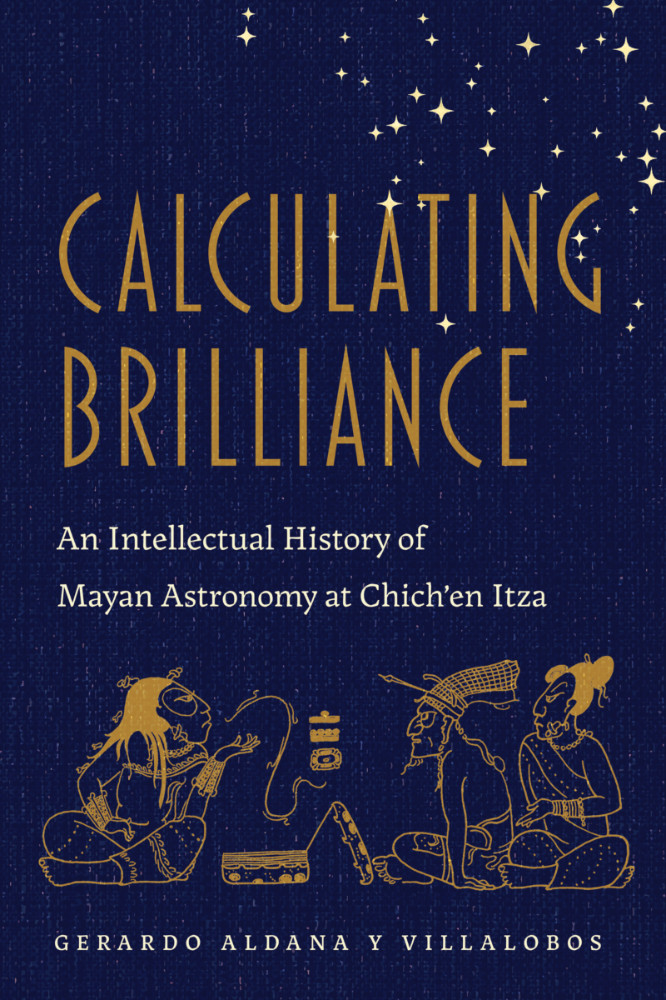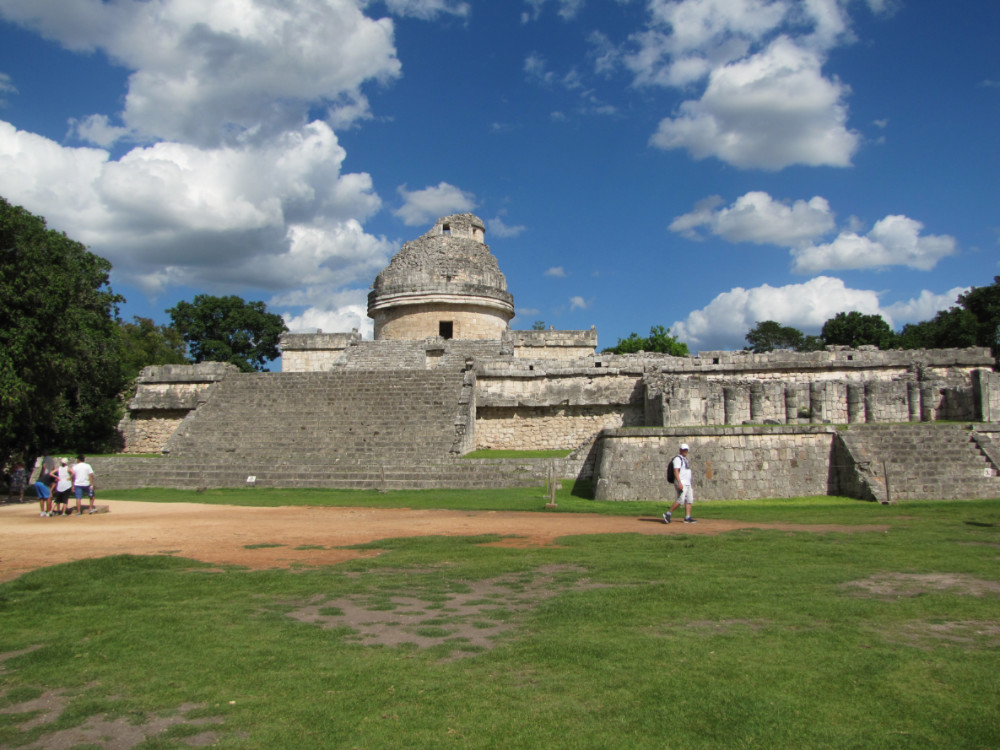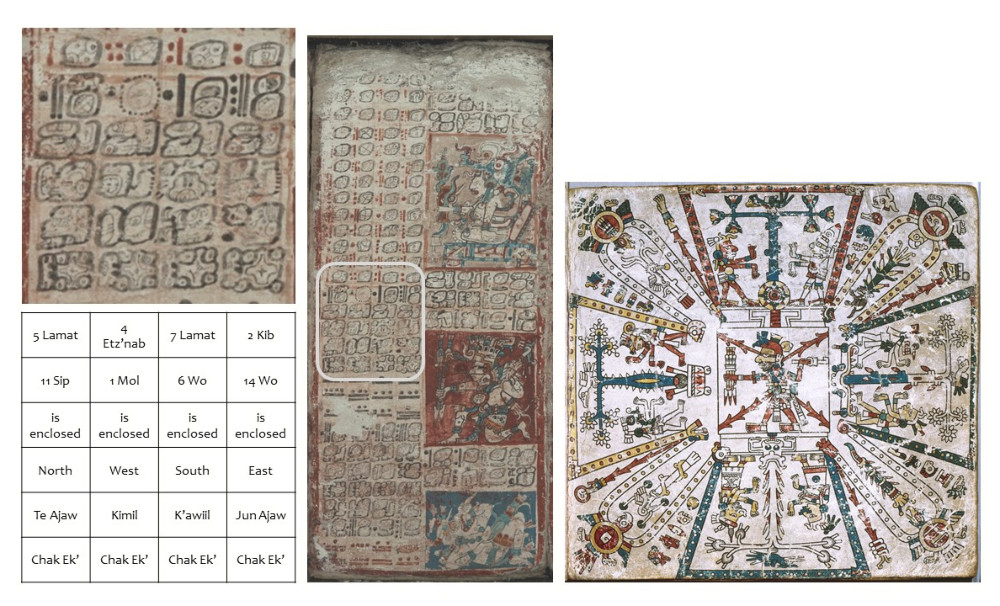‘Calculating Brilliance’


Gerardo Aldana would like to introduce you to K’uk’ul Ek’ Tuyilaj. Never heard of her? You have plenty of company. A Mayan woman, she discovered how to project, over huge time spans, the appearance of Venus at Chich’en Itza in the 9th century.
And yet she is largely invisible in the literature of Maya history. Why is that? The truth is ... it’s a bit complicated. As Aldana explains, it’s a story about knowledge: where it comes from, who interprets it, and its place in a culture.
It’s the story Aldana, dean of the College of Creative Studies at UC Santa Barbara and professor of Chicana and Chicano Studies, tells in “Calculating Brilliance: An Intellectual History of Mayan Astronomy at Chich’en Itza” (The University of Arizona Press, 2022). The book, published March 15, is available to order from the publisher and online outlets.
This is a field Aldana knows well. In 2016 he published a paper in which he presented a new interpretation of the Venus Table of the Dresden Codex, which tracks the observable phases of the second planet from the Sun. Blending the study of Mayan hieroglyphics, archaeology and astronomy, he demonstrated that the mathematical correction of the Venus calendar — a sophisticated innovation — was likely developed at the city of Chich’en Itza during the Terminal Classic period (AD 800-1000). But, as he said at the time, he had no idea who actually discovered the correction.
And that takes us to K’uk’ul Ek’ Tuyilaj, albeit somewhat circuitously. As Aldana notes, scholars have known about the long-term corrections built into the Dresden Codex Venus Table since the 1930s. But they largely relied on mathematical patterns and argued that by focusing on the accuracy of the table in reconstructing historical events, they could recover its origins. They made some compelling arguments, but each required awkward assumptions or left inconsistencies unsolved.
Aldana took a different approach. In addition to the math, he did a careful reading of the hieroglyphic text, studied parallel content in other Indigenous codices (and so relationships across contemporary Indigenous communities), and a placing of the origin of the Venus Table back into its own historical context at Chich’en Itza.
“Bringing together these various forms of data, we encounter epigraphic, mathematical and historical motivations for K’uk’ul Ek’ Tuyilaj’s discovery,” he said. “It emerged from a triangulation of different forms of data, which is probably why it hadn’t been recognized before.”
Identifying K’uk’ul Ek’ Tuyilaj could have been the end of the story, but Aldana said the work led him to consider what he calls three levels of knowledge production. The first, what he calls “hegemonic” knowledge production, seeks to advance the basic literature of the disciplines it engages — in this case Indigenous studies, anthropology, and ethnic and Chicano studies.
“It works with and through them to develop a new argument,” he said. “That is what I refer to as hegemonic knowledge production. It recognizes that this work wouldn’t be possible without the scholarship that came before it.”
The second, “counter-hegemonic production,” recognizes that establishment scholarship can benefit from change, reform or even dissent.
“It starts with the representations that already exist, but works to move them in new directions,” Aldana explained. “This is the kind of work often fueling ethnic studies and feminist studies scholarship. It’s grounded in critique, but it still works within the framework defined by hegemonic knowledge production.”
The third is a localized scholarship that he calls “a-hegemonic discourse” — highly localized scholarship that doesn’t concern itself with the others.
“This is Langston Hughes, writing for his Black community and not worrying what scholars of any background say,” Aldana said. “This is Gloria Anzaldua writing poetry in ‘The Borderlands’ and not being interested in getting published by a mainstream press. A-hegemonic knowledge production is Sterlin Harjo writing ‘Reservation Dogs’ to native communities and comfortable if non-native audiences like the work, but not being burdened by their critique of it.”
It all may sound esoteric, but Aldana said that bringing these different forms of knowledge production into conversation with one another — without subjecting one to another — is one of the main aims of the book.
“I want native, Indigenous, Chicana/o/x kids, Latina/o/x/e kids — however they identify — to know about Chich’en Itza and K’uk’ul Ek’ Tuyilaj in ways that challenge the representations they often see in popular culture,” he said. “But I also want my colleagues in the academy to see the utility of studying Mayan astronomy in order to better interpret the archaeological record — when it is relevant. And I want my colleagues to look to ancient Indigenous cultures for alternative views of what our world has been and can be.
And so back to K’uk’ul Ek’ Tuyilaj. As Aldana tells it, her discovery of a mathematical way to accurately predict Venus’s appearance was the product of basic astronomy: She tracked the patterns of celestial movements using her calendric tools. In doing so she found Venus would appear at the “wrong” time according to her almanac.
The problem was that her almanac was off; it held that Venus’s synodic period — the time it takes for a planet to return to the same position relative to the Sun as seen from Earth — was 584 days instead of 583.92. In looking through historical codices, she discovered a mathematical pattern and found she could use a specific time interval — 2,340 days — to construct corrections for Venus periods. That discovery led her to form the basis of the Venus Table, which was preserved and eventually copied into the manuscript we now refer to as the Dresden Codex.
“ ‘Calculating Brilliance’ refers on the one hand to the ancient astronomers’ work in general and for K’uk’ul Ek’ Tuyilaj and her small city at what would become the Chich’en Itza that we know today,” Aldana said. “Her astronomical discovery facilitated a broader engagement with large-scale sociopolitical changes of the Terminal Classic period and early Postclassic connected to K’uk’ulkan, better known as Quetzalcoatl or the Feathered Serpent. Her own calculations of celestial brilliance did not reflect the work of an isolated scientist staying up all night and ignoring her everyday world. Instead, astronomy at Terminal Classic period Chich’en Itza was important to the intellectual livelihood of her local communities.
“But the book is also intended to demonstrate the opportunities that are coming available with our advancing ability to read Mayan hieroglyphic inscriptions,” he continued. “For the longest time, scholars and writers wearing different hats have emphasized our own biased interpretations of Indigenous Mayan cultures and intellectual activities. So actually getting at the brilliance and the beauty of their cultures and experiences from within — as opposed to assuming and/or imposing them — becomes possible in new ways when we can read their texts and connect what they wrote with their other forms of cultural expression. We have to reinvent how we approach ancient Mayan intellectual activity, and we do it injustice if we only project onto it what we know from our own or from other cultures.”





